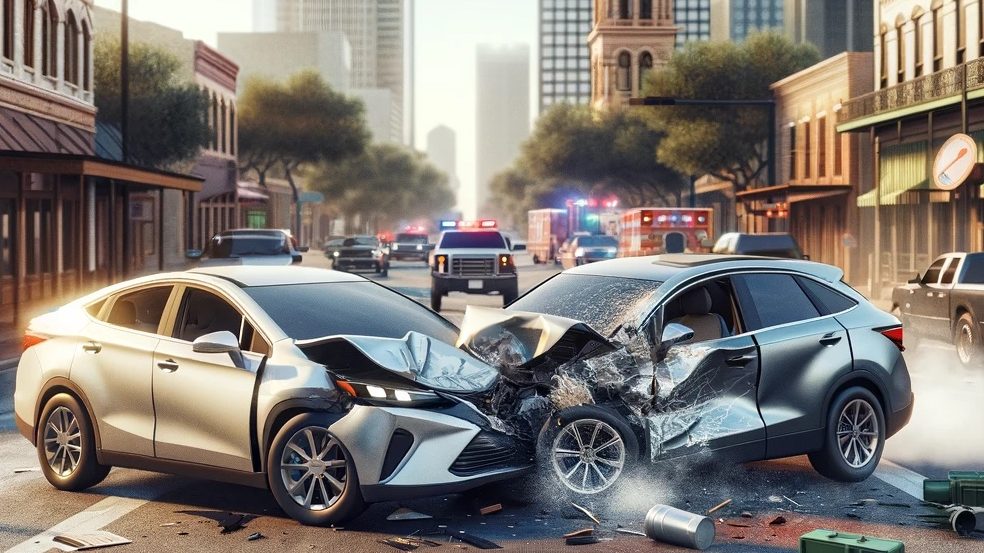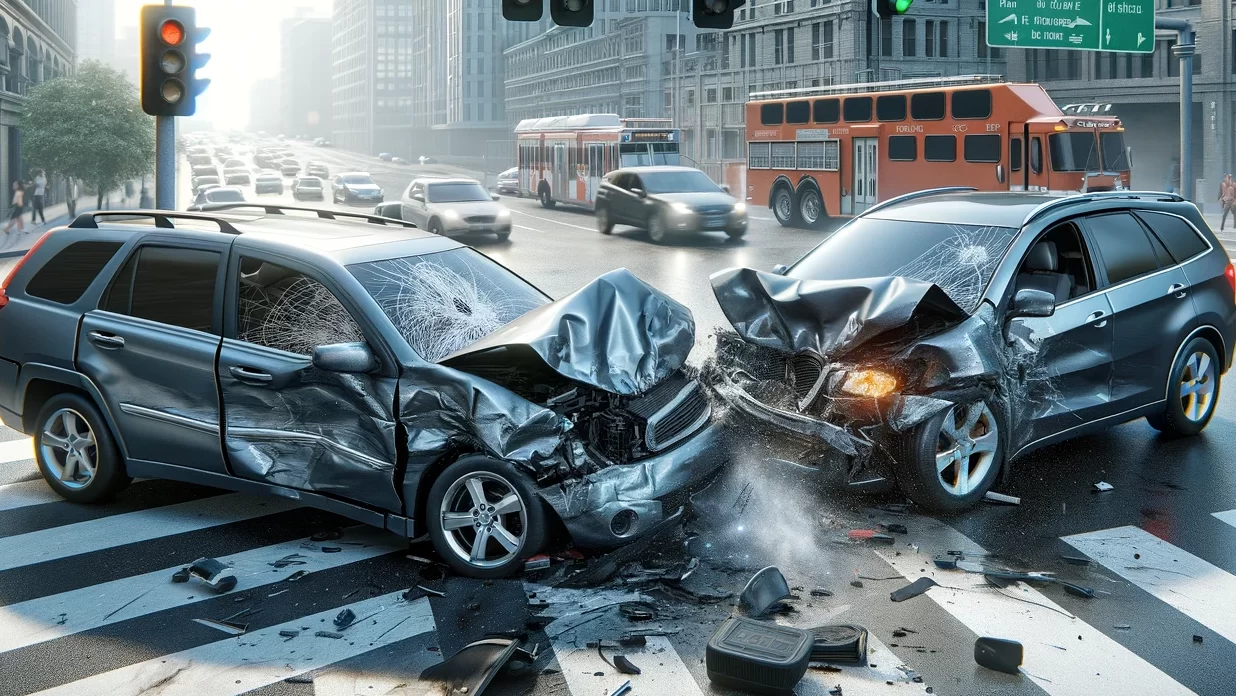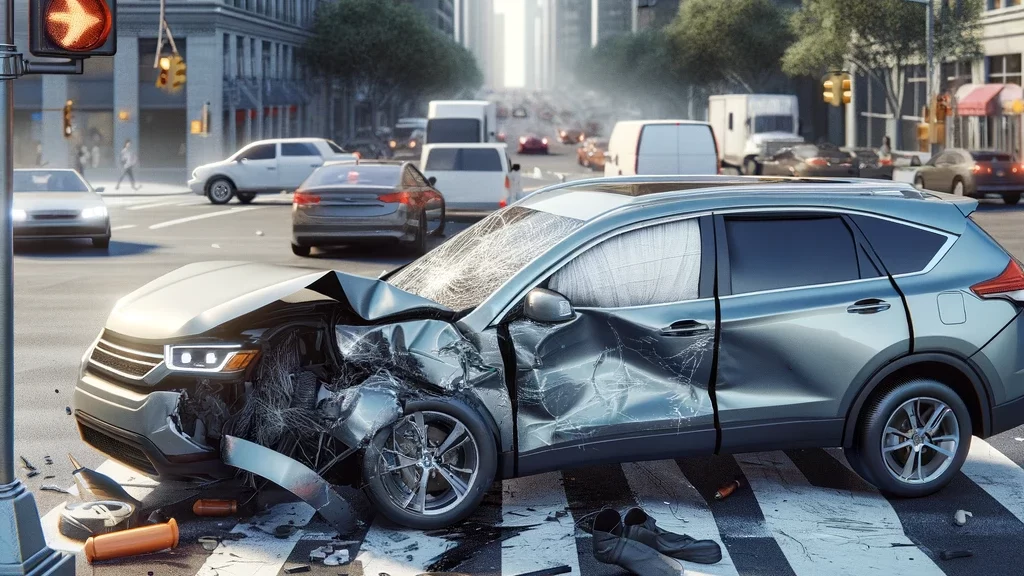T-Bone Accidents in Texas: Legal Guide to Determining Fault
January 12, 2024

T-bone accidents, also known as broadside collisions, can have devastating consequences. In Texas, determining fault in these accidents can be complex and requires a thorough understanding of the legal process. This legal guide will provide you with valuable information on how liability is determined in T-bone accidents and the steps you can take to protect your rights.
In a T-bone accident, one vehicle’s front collides with the side of another vehicle, forming a “T” shape. These accidents often occur when a driver fails to obey traffic signals or signs and collides with another vehicle that has the right of way. T-bone accidents can result in serious injuries and even fatalities.
When it comes to determining liability in a T-bone accident in Texas, the state follows a comparative fault law. This means that each driver’s degree of fault is considered when determining liability. If both drivers were at fault, their percentage of fault will be assigned, and the damages awarded will be reduced accordingly.
Several legal requirements must be met to determine liability in a T-bone accident, including duty of care, breach of duty, causation, and damages. Insurance companies consider various factors such as police reports, witness statements, vehicle damage assessments, and medical records to determine fault and liability.
If you have been involved in a T-bone accident in Texas, it is crucial to seek legal advice and gather evidence to support your liability claim. An experienced attorney can guide you through the legal process, protect your rights, and fight for the compensation you deserve.
Key Takeaways
- T-bone accidents, also known as broadside collisions, can result in serious injuries and fatalities.
- Determining liability in a T-bone accident in Texas is complex and depends on several factors.
- Texas follows a comparative fault law, where each driver’s degree of fault is considered.
- Legal requirements, such as duty of care, breach of duty, causation, and damages, must be met to determine liability.
- It is important to seek legal advice and gather evidence to support a liability claim after a T-bone accident in Texas.
Common Injuries in T-Bone Car Accidents

T-bone car accidents can result in a variety of injuries, ranging from minor cuts and bruises to severe injuries that require long-term medical treatment. Common injuries in T-bone car accidents include whiplash, broken bones, lacerations, head trauma, spinal cord injuries, and internal organ damage. The severity of the injuries depends on factors such as the speed and force of impact, whether seat belts were worn, and whether airbags deployed. T-bone accidents are particularly dangerous due to the lack of protection on the sides of vehicles, and they can often be fatal.
When a T-bone car accident occurs, the collision can cause the vehicles involved to sustain significant damage. However, it is the individuals inside the vehicles who are most vulnerable to injuries. The impact from the collision can forcefully jerk the neck and upper body, leading to whiplash. The sudden jolt can also result in broken bones, including fractures in the arms, legs, ribs, and pelvis.
Lacerations, caused by broken glass or objects inside the vehicle, can result in deep cuts that may require stitches or even surgery. Head trauma is also common in T-bone car accidents, which can range from mild concussions to severe traumatic brain injuries. Spinal cord injuries may occur if the force of the impact damages the vertebrae, leading to partial or complete paralysis.
Internal organ damage is another potential injury that can result from a T-bone car accident. The force of the impact can cause organs to be compressed or punctured, leading to severe internal bleeding or other life-threatening complications. In some cases, internal injuries may not be immediately apparent, highlighting the importance of seeking medical attention after a T-bone car accident, even if there are no visible external injuries.
It is crucial for individuals involved in a T-bone car accident to seek immediate medical attention to assess and treat any injuries. Prompt medical care can help prevent further complications and ensure a full recovery. Additionally, documenting all injuries and seeking legal advice from a personal injury attorney can be important steps in pursuing compensation for the physical, emotional, and financial damages caused by the accident.
Liability in a T-Bone Car Accident in Texas

Determining liability in a T-bone car accident in Texas can be complex and depends on several factors. In Texas, the driver who caused the accident is typically held liable for damages. However, there are situations where both drivers may share fault.
Texas follows a comparative fault law, where each driver’s degree of fault is taken into account. If both drivers were partially at fault, their percentage of fault will be assigned, and the damages awarded will be reduced accordingly. Texas also follows a modified comparative fault rule, which means that if a driver is found to be more than 50% at fault, they cannot recover any damages from the other driver.
Legal requirements for determining liability in a T-bone car accident in Texas include duty of care, breach of duty, causation, and damages. In some cases, both drivers can be held liable for a T-bone car accident in Texas if both were found to be negligent and contributed to the accident. Factors such as traffic laws, witness statements, police reports, and physical evidence are considered when determining liability.
It is important to gather evidence and seek legal advice to determine who may be held responsible for damages and injuries in a T-bone car accident in Texas.
| Liability Rule | Description |
|---|---|
| Comparative Fault | Each driver’s degree of fault is considered, and damages are reduced accordingly. |
| Modified Comparative Fault | If a driver is more than 50% at fault, they cannot recover any damages from the other driver. |
| Legal Requirements | Duty of care, breach of duty, causation, and damages are considered to determine liability. |
| Both Drivers Liable | In some cases, both drivers can be held liable if they were found to be negligent and contributed to the accident. |
Damages and Compensation in a Texas T-Bone Car Accident
After a T-bone car accident in Texas, victims may be entitled to recover damages for various losses incurred as a result of the accident. These damages can include medical expenses, lost wages, pain and suffering, property damage, and wrongful death damages if applicable. The amount of compensation awarded to the victim depends on several factors, such as the severity of the injuries sustained and who was found liable for the accident.
When seeking compensation for a T-bone car accident in Texas, it is crucial to gather evidence that supports your claim. This evidence may include medical records, photographs of the accident scene, witness statements, and documentation of financial losses such as medical bills and pay stubs. Consulting with a personal injury attorney who specializes in car accidents can help you navigate the legal process and ensure that you receive fair compensation for your damages.
The timeline for settling a liability claim after a T-bone car accident in Texas can vary depending on various factors. However, it is important to note that there is a statute of limitations of two years to file a personal injury lawsuit in Texas. Therefore, it is advisable to take prompt action and seek legal advice to protect your rights and maximize your chances of recovering the compensation you deserve.
| Type of Damages | Description |
|---|---|
| Medical Expenses | Coverage for medical treatments, hospital stays, surgeries, medications, rehabilitation, and ongoing medical care related to the accident. |
| Lost Wages | Compensation for income lost due to the inability to work during recovery from injuries sustained in the T-bone car accident. |
| Pain and Suffering | Financial compensation for physical pain, emotional distress, and mental anguish resulting from the T-bone car accident. |
| Property Damage | Reimbursement for the repair or replacement of the damaged vehicle and any personal belongings that were destroyed or lost in the accident. |
| Wrongful Death Damages | Compensation awarded to the surviving family members in the event of a fatality resulting from the T-bone car accident. |
Preventing T-Bone Car Accidents in Texas
To prevent future T-bone car accidents in Texas, drivers can follow several key tips and practices. First and foremost, it is crucial to obey all traffic laws and signals. This includes adhering to speed limits, stopping at red lights and stop signs, and yielding the right of way when necessary.
Additionally, drivers should avoid distractions while behind the wheel, such as texting or using their phones. Keeping focus on the road can greatly reduce the risk of a T-bone accident. Checking blind spots before making turns or changing lanes is another important habit to develop, as it ensures awareness of other vehicles that may be in close proximity.
Intersections are particularly vulnerable areas for T-bone accidents. Drivers should exercise patience and caution when approaching intersections, taking the time to carefully observe traffic and pedestrian movements. Yielding to other vehicles, especially emergency vehicles, is crucial for maintaining safety on the road.
For pedestrians, following safety precautions is equally important. Crossing streets at designated crosswalks or intersections, rather than jaywalking, can help ensure visibility to drivers. Making eye contact with drivers before crossing and avoiding distractions, such as using headphones or being engrossed in mobile devices, further enhances pedestrian safety.